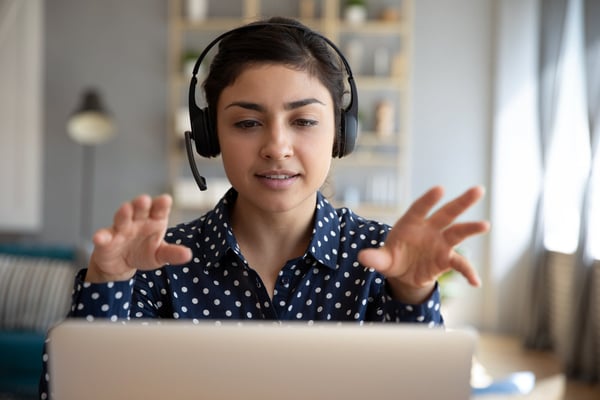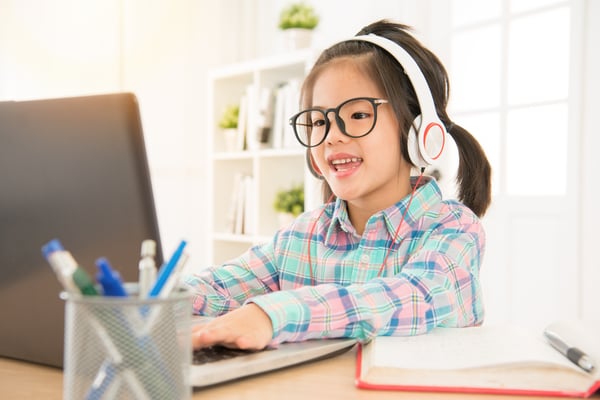Anaheim/OC Hotel & Lodging Association Taps Presidio for Management
As a leading public affairs and communications firm in Southern California, we at Presidio are thrilled to announce that the Anaheim/Orange County...
5 min read
 Samantha Marquez
:
Sep 11, 2020 12:12:16 PM
Samantha Marquez
:
Sep 11, 2020 12:12:16 PM

Distance Learning poses numerous challenges, and Presidio is proud of all the incredible work that our partners in education are doing to make sure that their students are learning even during these unprecedented circumstances.
With this in mind, we've gathered together a list of 8 strategies (beyond Zoom) that school districts can employ to communicate frequently and effectively with their students. For more tips about parent communications, please read our other blog post, Communicating with Parents in the Age of Distance Learning.

Teachers can include information about weekly homework, test dates, and class projects on a classroom website. You can also use your class site as a way to provide links to free academic web programs and games that students can access while at home - these kinds of resources will be especially helpful during Distance Learning to bolster the online education that students are receiving. This platform is also a great way to share Zoom class screenshots and student work, in addition to important classroom announcements. A classroom website is a wonderful platform that can be used to reach students directly during virtual learning.
Student agendas are a great way to have students document homework assignments and to track parent-teacher communication. You can send a daily agenda email to notify parents and guardians about what was done that day, for example, with the expectation that the parent will also go over it with their child. As an evening routine, parents can then review their student’s agenda to see what homework was assigned and read any important updates about the school day. This will help parents understand how Distance Learning is progressing and help students get crucial support from both their parents and teacher(s).
More than likely, some of your students - or their parents - are on one or more social media sites daily. You can take advantage of this in order to meet your students right where they are: bring your classroom right to the screen in the palm of their hands. Consider creating class pages on Facebook, Instagram, and/or YouTube. This will help your students feel connected to you, and their other classmates, amidst Distance Learning. Make sure to keep these pages current!
Google Classroom is a wonderful tool that is totally free and easy to implement in everyday online teaching. This program can help you simplify teaching and learning, as it allows you to add students directly to your Google Classroom, or you can share a code or link so the whole class can join by themselves. Once you’ve set up your Google Classroom, and your students have joined, you can add class work that then shows up in your students’ virtual calendars. You can also use Google Classroom to communicate with parents by automatically sending them updates on your class’s progress. In terms of assessment, you can grade consistently and transparently with rubrics that are integrated into student work. Aside from Google Classroom, you can also explore sites like ClassDojo, Canvas, Seesaw, or Schoology, to see which one is right for you. Read more about each one by clicking on their name and visiting their website!

Update your gradebook consistently, since it’s one of the main tools that students have in assessing how they are doing in your class. Your virtual gradebook, when updated after each assignment, allows you to communicate your students’ personal progress in your class, even during Distance Learning. If they’re able to see their progress in real time, they can adjust accordingly, before too many weeks pass and make catching up too difficult.
Audio emails or audio messaging can be used to provide feedback to students online. This method of communication often adds a more personal touch to the feedback and makes it more meaningful. In order to send a voice message to a student, you can use VoiceThread, a web-based platform that allows teachers and students to record audio and then invite others to record comments as well. You can use this platform with your students in a variety of ways - by recording yourself reading the instructions for an assignment, by encouraging them to use it for peer reviews, or by having your class create presentations using their recorded audio. Most importantly, allowing your online students to hear your voice when giving them feedback will make it feel more like regular, in-person school, when you would normally be able to talk to them much more often.
This can be as simple as providing a date and time for students, as well as a Zoom link which they can join for the study session (if bandwidth is an issue, students can alternatively collaborate on a Google Doc). By encouraging students to attend, you will be giving them a place to connect with each other on a personal level, as well as a forum to discuss important class material. Study sessions allow students to talk things out with each other and to make breakthroughs on tough assignments with the help of their classmates. This will help them feel more independent and confident in their understanding of the materials. It’s important for you to facilitate the planning of these study sessions during Distance Learning, as students are unable to meet in person and therefore are less likely to organize collaborative meetings on their own.
Asking your students what they think adds yet another personal touch to your communications. Students will likely be more interested in your class if you use surveys or short polls to get a feel of how they think things are going. It will show them that you care about their opinions, thoughts, and feelings when it comes to Distance Learning, which is an important facet in keeping them engaged. In addition, their feedback can also help you improve the course content for future students!
Caroline Baetkey contributed to this post.
 Samantha Marquez
Samantha Marquez
Director of Public Agency Services
Samantha Marquez is a community relations and engagement specialist with over six years of experience in legislative affairs and targeted policy messaging on the local and state level. Before coming to Presidio, Samantha served as the District Director to the Majority Leader of the California State Assembly, where she served as a liaison between local public agencies and the state government. In the Assembly, Samantha was the Majority Leader’s principal aide for K-12 education and transportation.

Caroline Baetkey
Intern
Caroline is a senior at UCLA, where she is pursuing a B.A. in History with minors in Film, Television & Digital Media and Digital Humanities. She is experienced in a diverse array of communications, including fashion public relations, influencer outreach, and social media marketing. After she graduates in Spring 2021, Caroline plans on working in PR and Marketing

As a leading public affairs and communications firm in Southern California, we at Presidio are thrilled to announce that the Anaheim/Orange County...

Presidio is excited to welcome the Arts Council for Long Beach (ACLB) as a new client for our government relations, strategic communications,...

Presidio, a leading public affairs firm, is pleased to announce that we have been retained by the California Association of Code Enforcement...